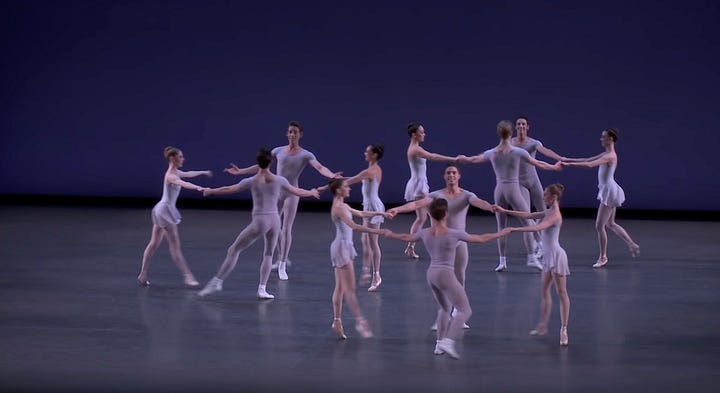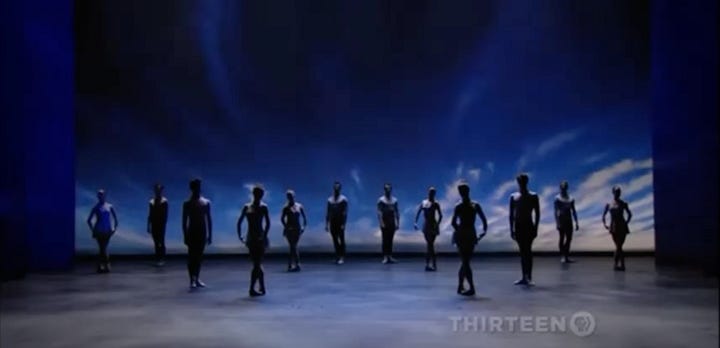What does no set look like?
A ballet. That is the one live performance genre that more often than not opts for nothing nothing nothing on stage, except a drop that can be lit a variety of ways. Maybe some wings to run off into. When the companies roll into town they sometimes have all of their own lighting equipment, and the theater lays down fresh marley on the floor for them.
In 1957 George Balanchine, who began his life as the European kind of Georgian and later became a New Yorker, choreographed an American Square Dance. I am told that many ballet choreographers have dipped into “folk” dances for material and inspiration. All of the recent productions of this production that I have found look anything but “folksy”. They eliminate everything vaguely “extra”. Except the socks. They keep the white sport socks with the ballet shoes on top.


Those productions are hypnotic. I saw a trio of Balanchine dances at the Met a few years ago. The live symphony, plus the rhythm and repetition of mo…
Keep reading with a 7-day free trial
Subscribe to A Theater-Going Habit to keep reading this post and get 7 days of free access to the full post archives.



